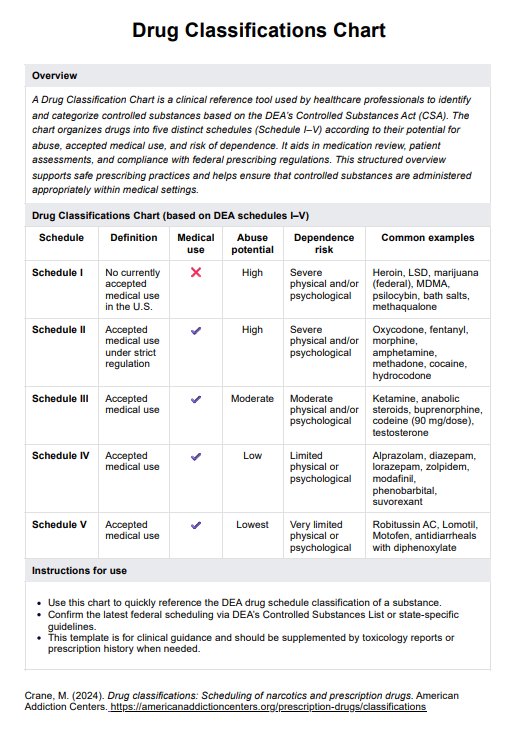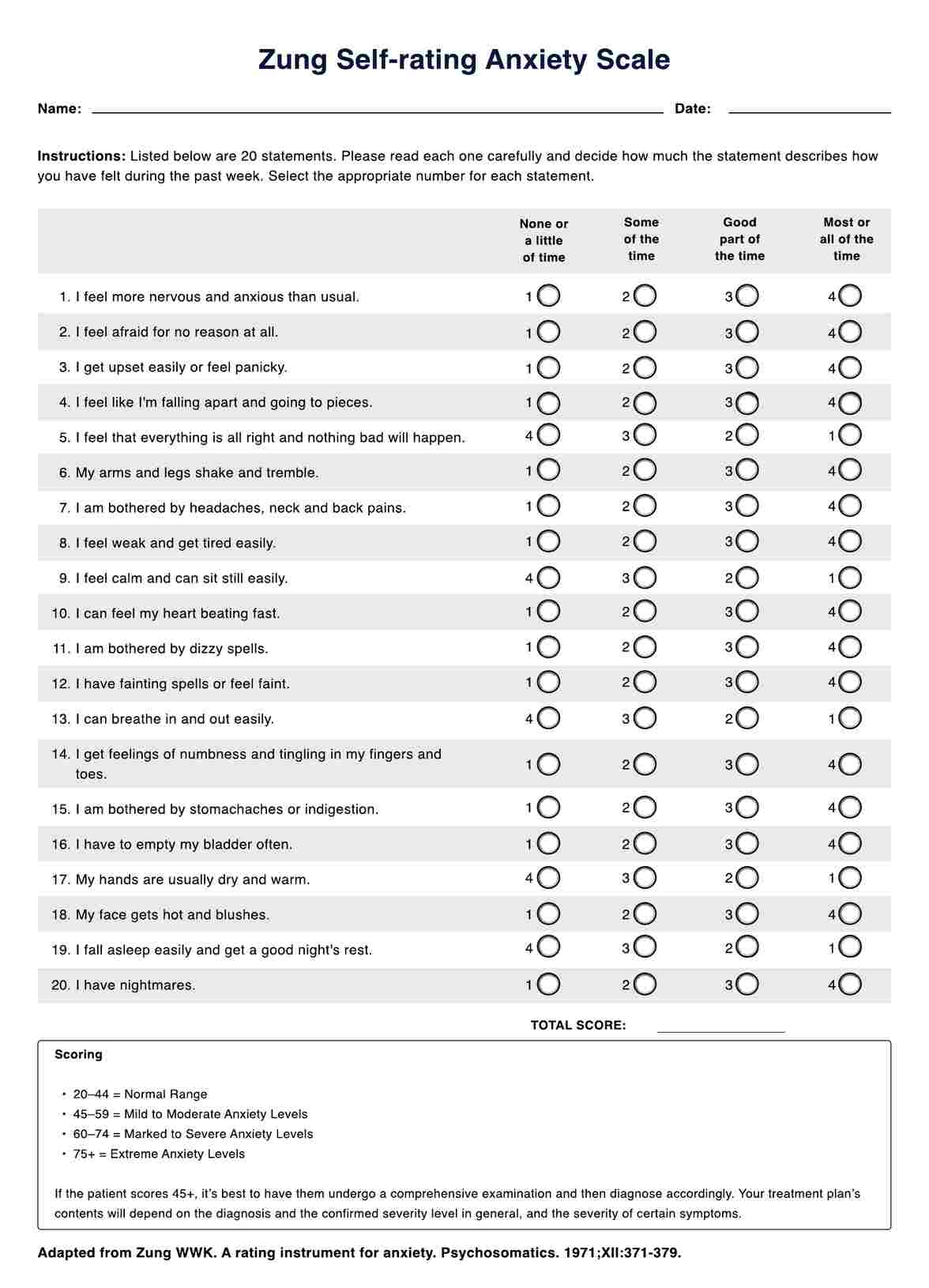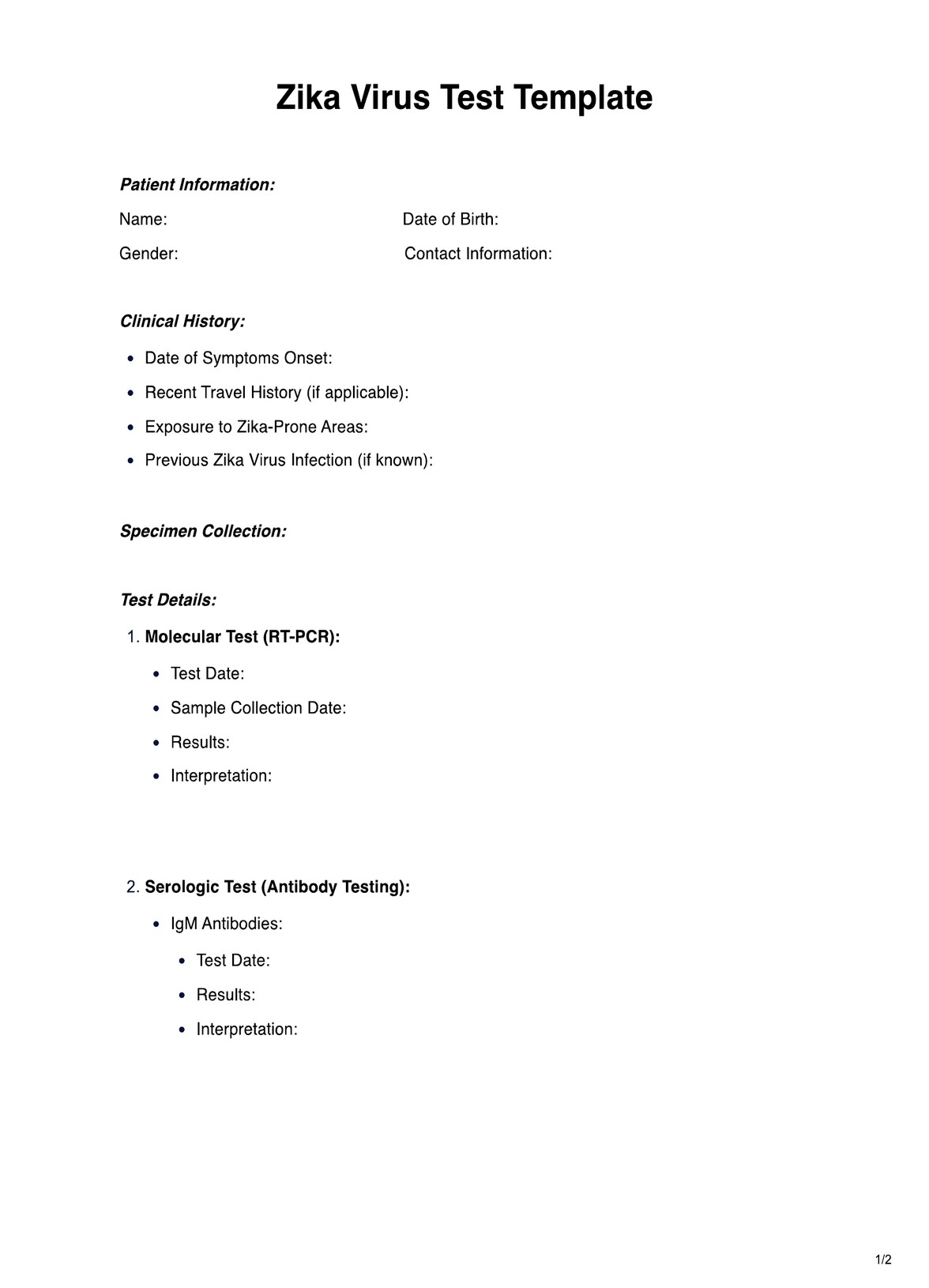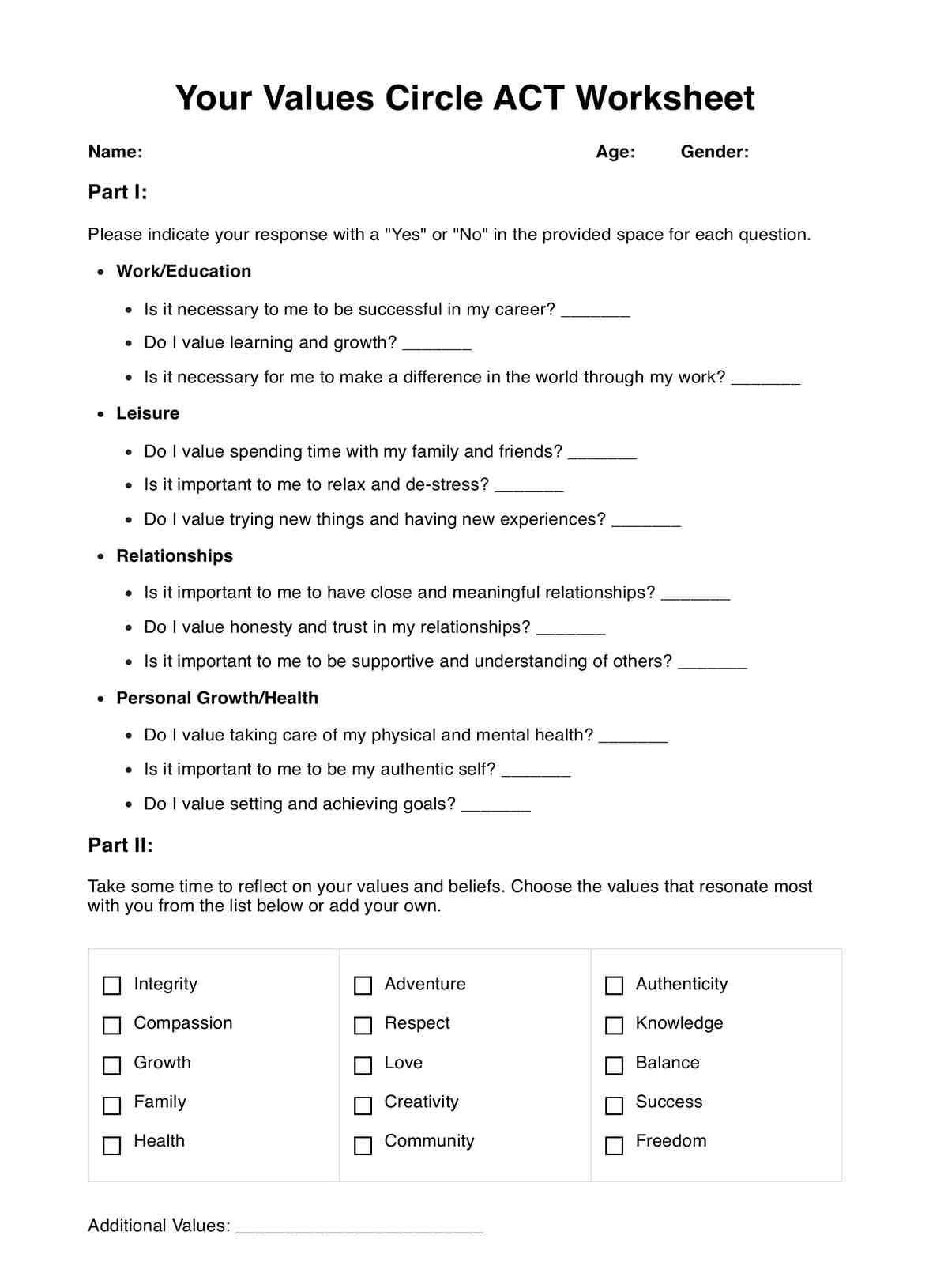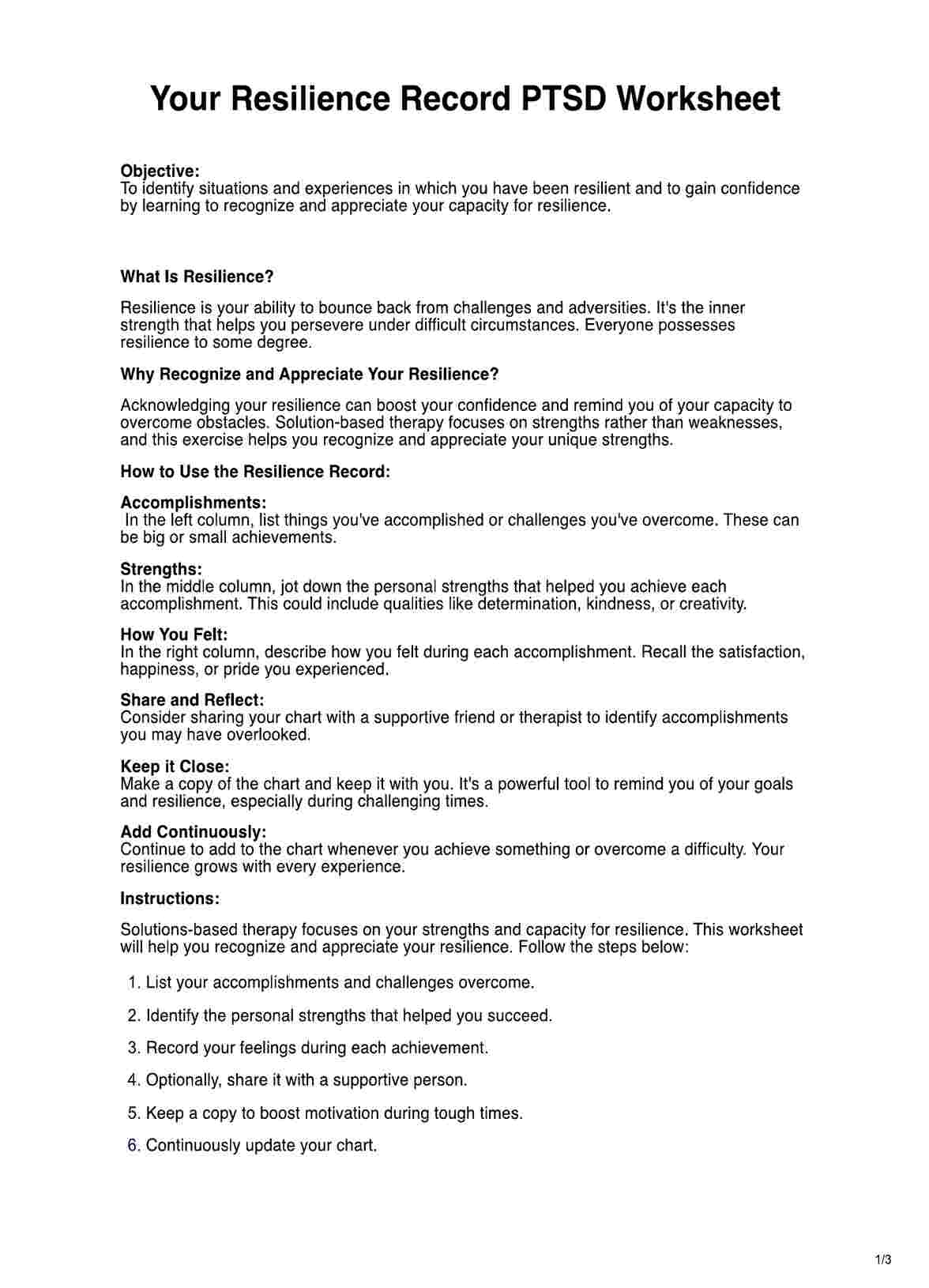The HRQOL Questionnaire measures both physical and mental health to assess how these conditions impact a patient's quality of life and daily activities.
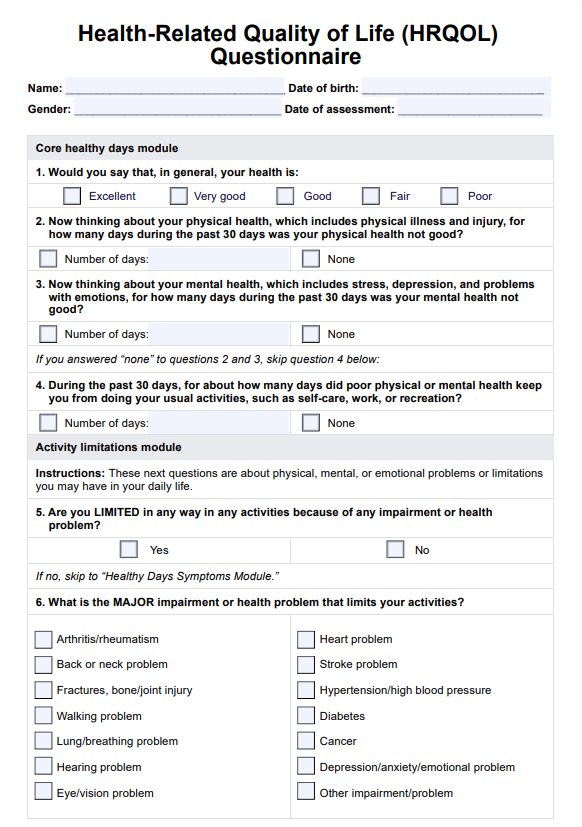
Health-Related Quality of Life (HRQOL) Questionnaire
Use our free HRQOL Questionnaire template to help your clients assess their physical and mental health, guiding effective care and treatment planning.
Use Template
Health-Related Quality of Life (HRQOL) Questionnaire Template
Commonly asked questions
Healthcare professionals, including physicians, psychologists, and public health experts, use the HRQOL Questionnaire to evaluate patient health, track progress, and guide treatment planning.
Using life instruments like HRQOL helps professionals understand the extent of physical illness and mental health issues, allowing for tailored treatment and monitoring of improvements or setbacks over time.
EHR and practice management software
Get started for free
*No credit card required
Free
$0/usd
Unlimited clients
Telehealth
1GB of storage
Client portal text
Automated billing and online payments


